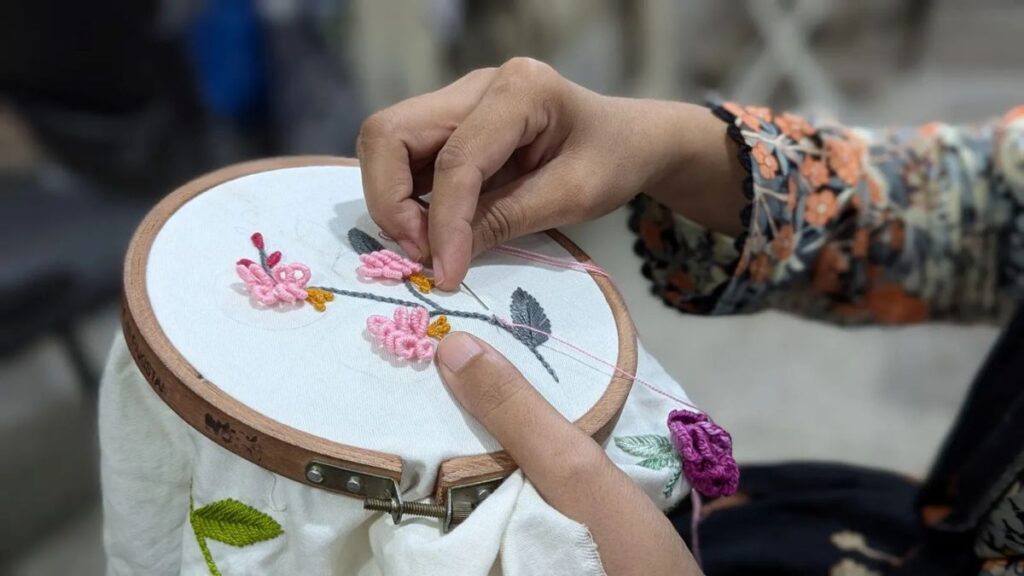Introduction to Bardoek and its Origins
Bardoek is more than just a craft; it’s a vivid tapestry woven from history, culture, and creativity. Originating from the heart of traditional artistry, this unique form captures the essence of its roots while embracing modern influences. As you explore the intricate world of bardoek, you’ll uncover stories embedded in every stitch and hue.
This ancient art form thrives on techniques passed down through generations. Each piece tells not only a visual story but also one of community and identity. Whether you’re an avid collector or someone who appreciates beauty in craftsmanship, understanding bardoek opens a window to timeless elegance that spans across cultures.
Join us as we dive deeper into the rich heritage behind bardoek crafting—where tradition meets innovation—and discover why this art continues to resonate with so many today.
The Traditional Techniques of Bardoek Crafting
Bardoek crafting is a dance of skill and tradition. Artisans employ age-old techniques passed down through generations. Each step in the process holds significance, blending craftsmanship with cultural narrative.
The materials used are often sourced locally. This connection to the land enhances the artwork’s authenticity. Natural dyes derived from plants create vibrant colors that tell stories without words.
Hand-carving remains a hallmark of bardoek production. The artisans’ hands mold each piece, ensuring unique details emerge as they carve away excess material. Tools may be simple, but their effectiveness lies in the artisan’s touch.
Incorporating intricate patterns showcases personal and regional identity within each creation. These designs resonate with history, reflecting traditions that have shaped communities for centuries.
Attention to detail distinguishes every bardoek piece, making it not just an object but also a testament to enduring artistic heritage and pride.
The Role of Culture and Heritage in Bardoek Artwork
Culture and heritage breathe life into Bardoek artwork. Each piece tells a story, woven from the threads of tradition. The techniques employed are often passed down through generations, preserving ancient customs.
Every design carries significance. Patterns reflect local myths, spiritual beliefs, and historical events. They serve as a canvas for cultural expression, showcasing the identity of artisans and their communities.
Bardoek art connects people to their roots. It fosters pride in one’s lineage while promoting awareness among newer generations. By embracing these traditions, artists ensure that the essence of their culture remains vibrant.
In an ever-changing world, Bardoek stands as a testament to resilience. It embodies values like craftsmanship and dedication—qualities cherished across time and space. Such art is not merely decorative; it encapsulates lives lived within its folds.
Examples of Bardoek Art and Its Significance
Bardoek art showcases an array of intricate designs, each telling its own story. From vibrant textiles to meticulously carved wooden pieces, these artworks reflect the deep cultural roots they spring from.
One striking example is the use of natural dyes in fabric creation. These hues are often derived from local plants and minerals, making every piece unique and meaningful. The patterns woven into bardoek fabrics frequently symbolize elements of nature or significant life events.
In addition to textiles, bardoek artisans create stunning pottery that embodies traditional techniques passed down through generations. Each piece serves not just as a functional item but also as a canvas displaying artistic expression and heritage.
The significance of this art form lies in its ability to connect people with their ancestry and foster appreciation for craftsmanship. Every artifact carries whispers of history, reminding us that beauty can transcend time through culture.
Modern Adaptations and Innovations in Bardoek Crafting
Modern adaptations in bardoek crafting have breathed new life into traditional methods. Artisans are exploring innovative materials, such as eco-friendly fibers and synthetic dyes, while still honoring age-old techniques.
Technology plays a crucial role too. Digital design tools allow creators to experiment with patterns that were previously unimagined. This fusion of tradition and technology results in stunning pieces that resonate with contemporary audiences.
Social media platforms showcase these innovations, creating a wider appreciation for bardoek art. Artists share their processes online, fostering community engagement and inspiring budding craftsmen.
Collaborations between traditional artisans and modern designers yield exciting results. These partnerships blend styles and ideas, ensuring the craft evolves while staying rooted in its rich history.
Such creativity not only preserves the essence of bardoek but also attracts younger generations who seek to connect with their cultural heritage through fresh perspectives.
Preserving the Legacy of Bardoek Through Education and Apprenticeships
The preservation of bardoek relies heavily on education and apprenticeships. Young artisans are eager to learn the intricacies of this traditional craft. Passing down techniques requires a dedicated mentor who understands not just the skills but also the stories behind each piece.
Workshops often feature hands-on experiences, allowing participants to engage deeply with materials and methods. This immersive approach fosters appreciation for both artistry and heritage.
Apprenticeships provide invaluable opportunities for aspiring artists to hone their craft under seasoned professionals. Each learner becomes part of a lineage that honors ancestral traditions while introducing fresh perspectives.
Institutions focusing on bardoek have emerged, offering structured programs that elevate awareness. These endeavors ensure that future generations grasp the significance of this art form and its cultural roots.
Through sustained efforts in education, we can nurture passion within communities, ensuring that bardoek remains vibrant for years to come.
Conclusion: The Enduring Beauty of Bardoek Art
The beauty of Bardoek art lies not only in its visual appeal but also in the stories it tells. Each piece is a testament to the dedication and skill of artisans who have honed their craft through generations. These artists draw from a rich tapestry of culture, blending traditional techniques with modern influences.
As Bardoek continues to evolve, it maintains a deep connection to its roots while embracing innovation. This dynamic interplay ensures that the art form remains relevant and vibrant in today’s world.
Preserving this legacy is crucial for future generations. Through education and apprenticeships, young artisans are equipped with the knowledge and skills necessary to carry on this beautiful tradition. The commitment to maintaining these practices will ensure that Bardoek thrives.
Bardoek serves as a bridge between past and present—a symbol of enduring beauty that resonates across time and cultures. Its significance transcends mere aesthetics; it embodies history, identity, and artistry beautifully intertwined.







